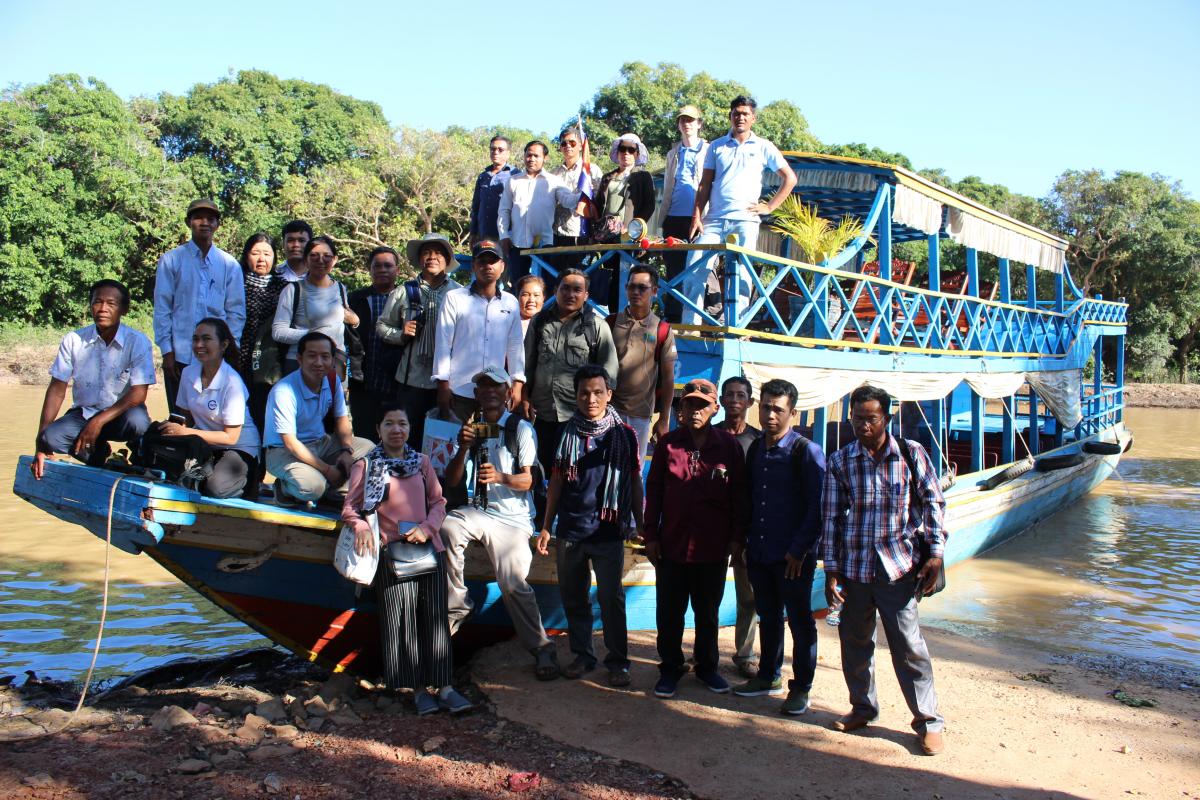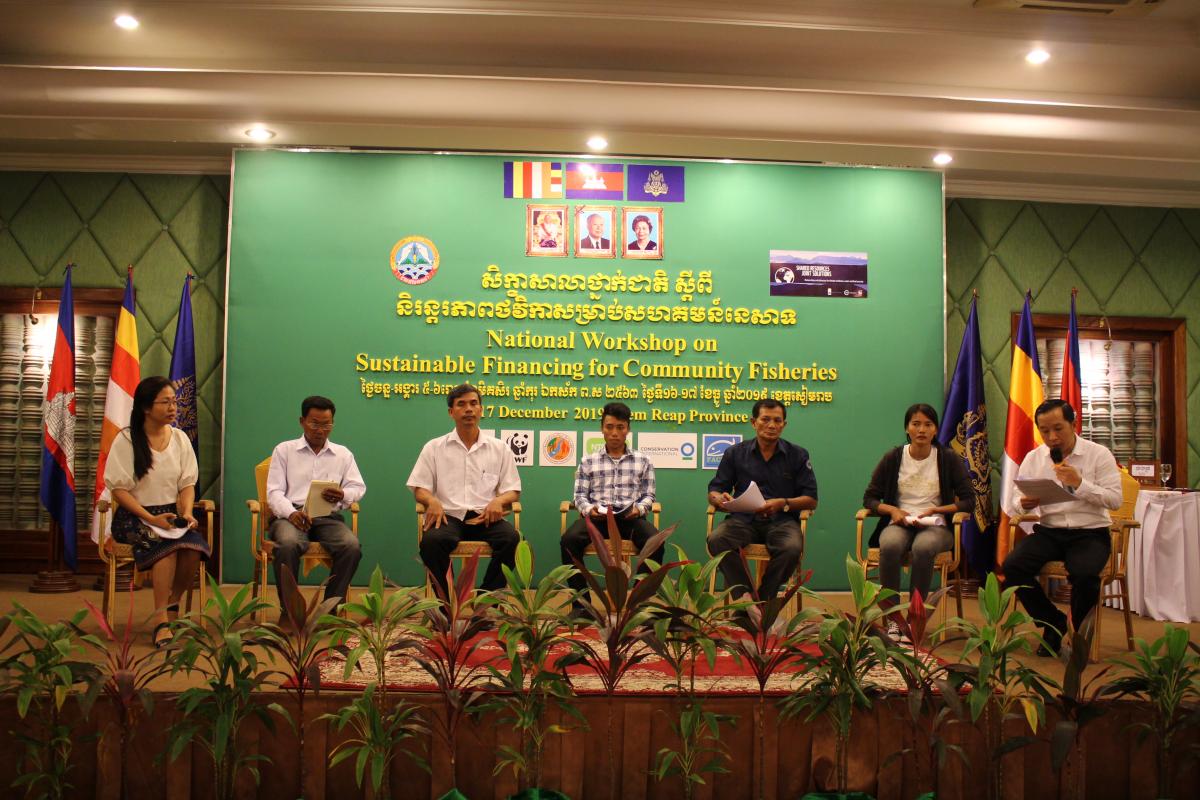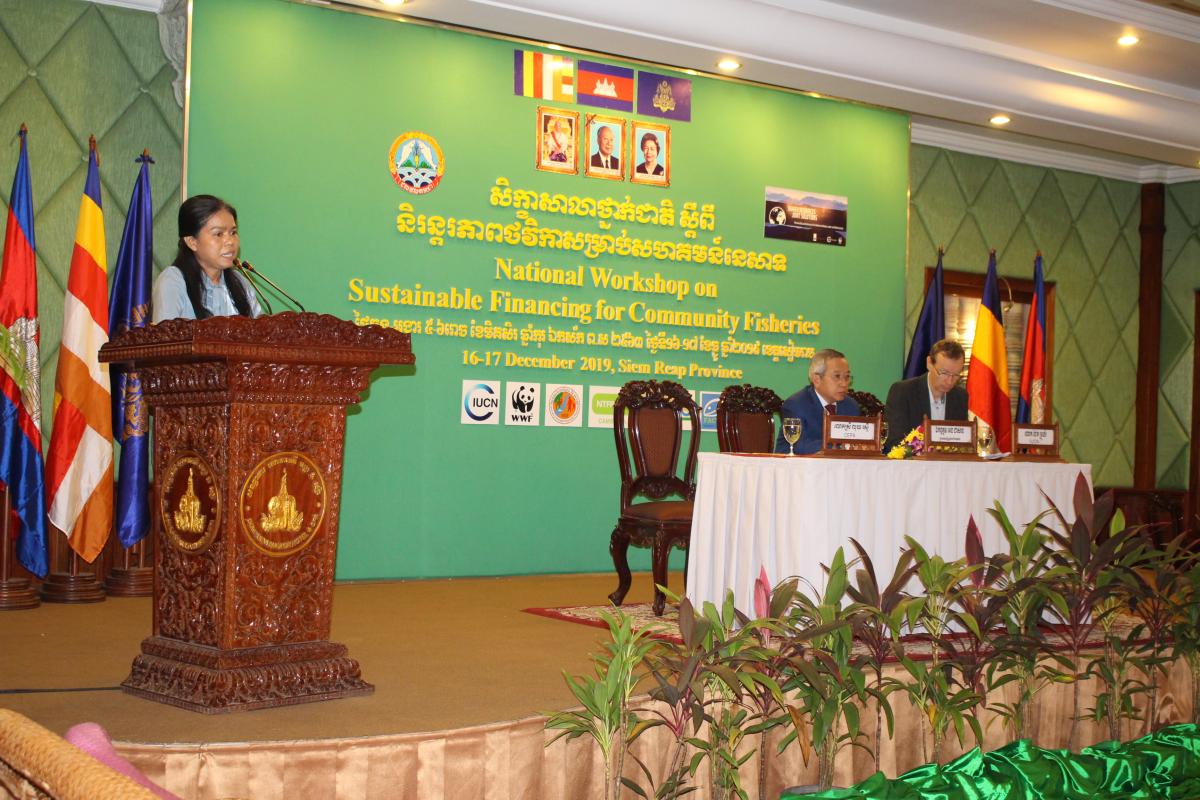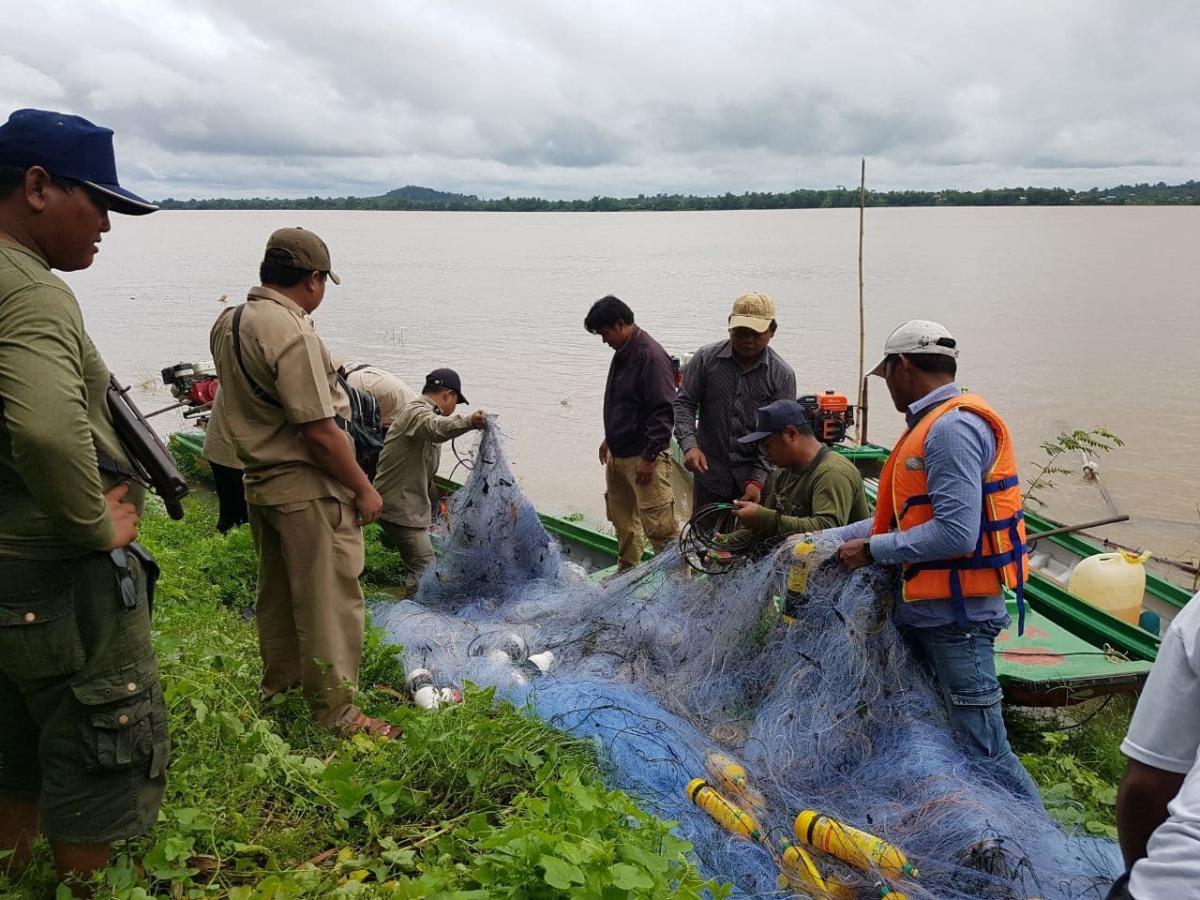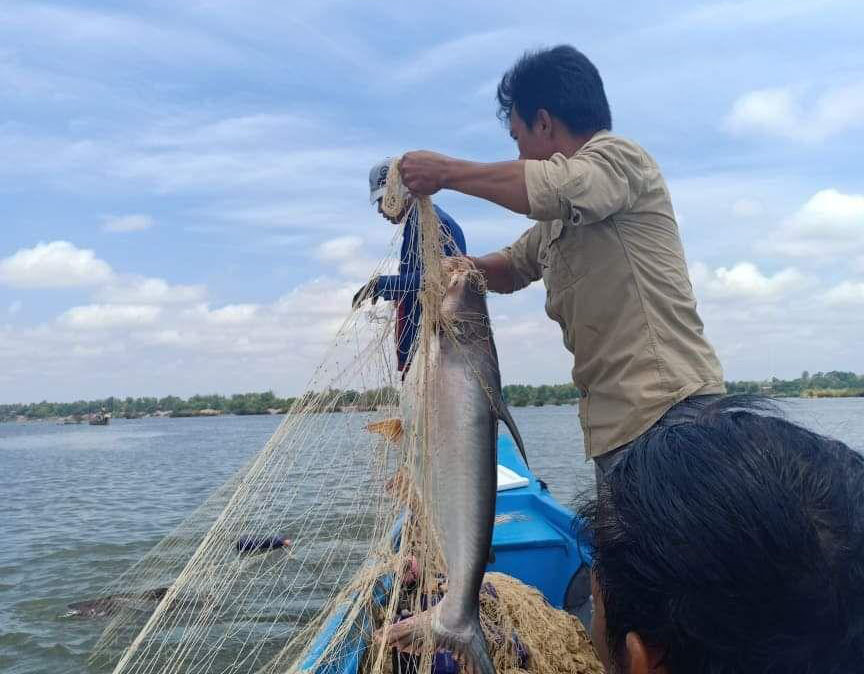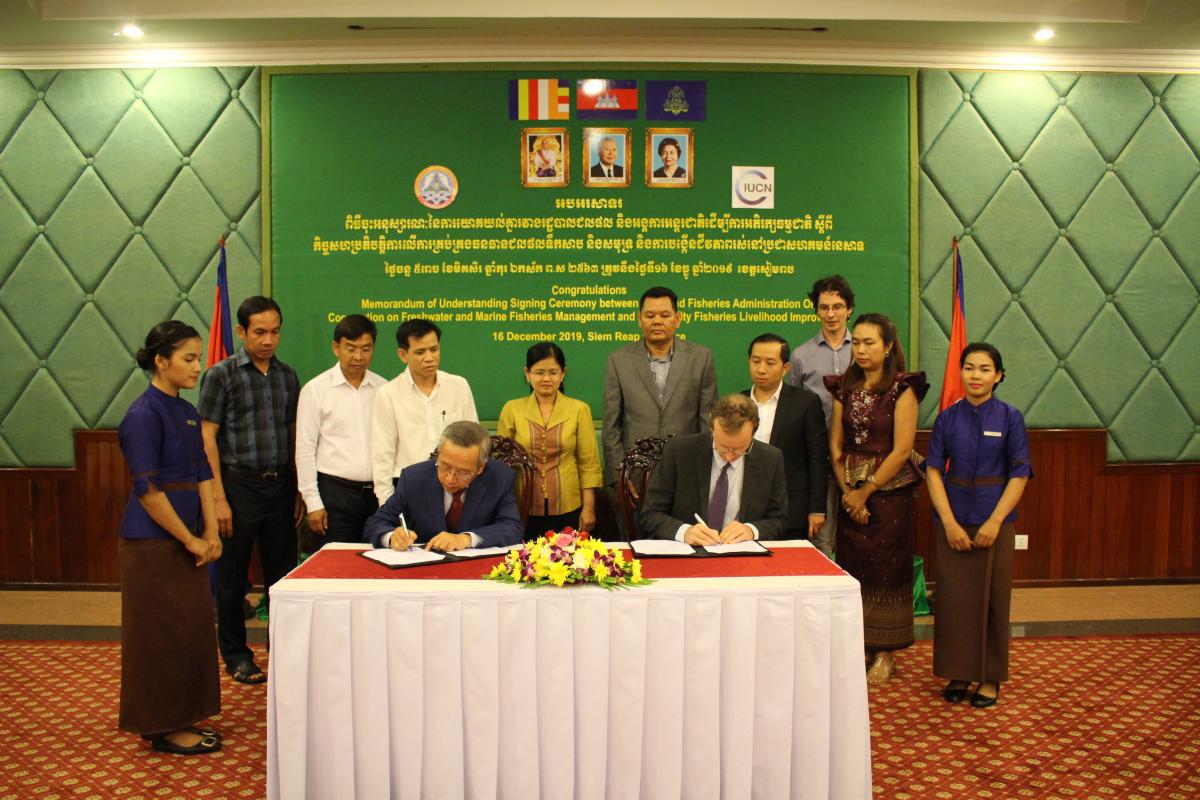Community fisheries and sustainable financing: what’s the link?
Cambodia’s Tonle Sap is the world’s largest freshwater fishing ground. It produces 50% of the wild fish biomass of the Mekong and accounts for 75% of Cambodia’s entire protein intake. In 2013-2016, IUCN and local NGO partner FACT implemented an EU-funded project to establish fish conservation areas (FCAs), small but strategically located protected areas that are recognized in law and are managed by elected fisheries committees. This built on the pioneer work that CI had done on FCA starting in the late 2000s.
Close monitoring showed that in all three sites, the FCAs resulted in fish stock recovery, increased fish catch, increased fish diversity, increased income, diversification into cage culture and other non-capture fisheries livelihoods, and reduced debt. Experience from the severe 2016 drought showed that communities with well managed FCAs recovered quickly. Overall, and as expected, FCAs have proved hugely beneficial from both a biodiversity and livelihoods perspective.
But it wasn’t all good news. In 2015, the EU commissioned an independent review of the project. The review concluded that a key constraint on community fisheries management in general and FCA effectiveness in particular was the lack of self-financing (rather than donor dependence). In one commune, less than half the households paid membership fees to the community fisheries committee and the same applies to most of the Tonle Sap’s 220 or so community fisheries.
Self-financing builds capacity. When community fisheries committees are responsible for managing money, they are subject to much greater scrutiny and accountability, which in turn boost confidence and management effectiveness. This can drive a virtuous cycle whereby increased capacity results in better protection, more fish, increased well-being, increased membership, and increased financial support, which in turn drives better protection.
To fill the sustainable financing gap, in 2018-2019 IUCN established a “mini” trust fund in our three focal communes in the Tonle Sap (and two more in the Stung Treng Ramsar site). Each trust fund received $5,000 in capital that was deposited with LOLC, a local bank, and generates 9% annual interest in local currency or about $35/month. This comes to about half the cash needed to pay for FCA patrolling and other core management operations.
IUCN has designed an M&E protocol to better understand the impacts of these trust funds in terms of financial leverage (i.e., using the $35/month to bring in additional funding from membership fees, commune investment funds, fees for fishing in the spillover zone around the FCAs, saving and loan (S&L) groups, donations, tourism, etc.) and institutional capacity. We want to know if our theory of change is correct: that greater financial autonomy will drive improved governance and fisheries management.
On December 16-17, 2019, IUCN in collaboration with CEPA, CI, WWF, and FACT organized a 2-day workshop and field trip in Siem Reap on sustainable financing options for community fisheries. As well as NGO staff and government officials, community participants came from freshwater fisheries on the Tonle Sap and Mekong and marine fisheries in coastal provinces. The project was funded by IUCN NL’s Shared Resources, Joint Solutions, a project that supports natural resources governance in Stung Treng.
It will take another year or so to tell if our theory of change is correct although early results from Boeung Tonle Chhmar Ramsar site are promising in terms of the amount of cash that it circulating within the community. Nevertheless, the workshop was an opportunity to take stock of and learn from existing sustainable financing initiatives. Two key messages were the benefits of financial diversification and the positive outcomes for women.
High-performing communities tend to feature S&L groups and fisheries value chain improvements. Although the challenges are significant, S&L groups are running well in some communities, delivering reliable returns to support fisheries management. Value chain improvements such as fish processing and marketing can increase women’s independence in particular. Another opportunity is to establish a capture fisheries cooperative that negotiates a fish prices with the middleman or market on behalf of its members.
Discussions of gender focused on how the dynamics between women and men limit opportunities for women. Challenges women face include restrictions on them leaving home due to family commitments, traditional norms and reluctance of many men to let women be leaders. Women’s autonomy is often limited by their dependence on income provided by men, and lack of independent income. These undermine their confidence to play a leadership role in fisheries management.
Nevertheless, women traditionally handle household money, often have good financial skills, and could play important leadership roles in community fisheries committees, particularly as treasurer. When committees are functioning well and delivering benefits, there is greater participation and a greater willingness for households to contribute financially. Fish processing and marketing are opportunities for women to directly engage economically and build self-confidence.
